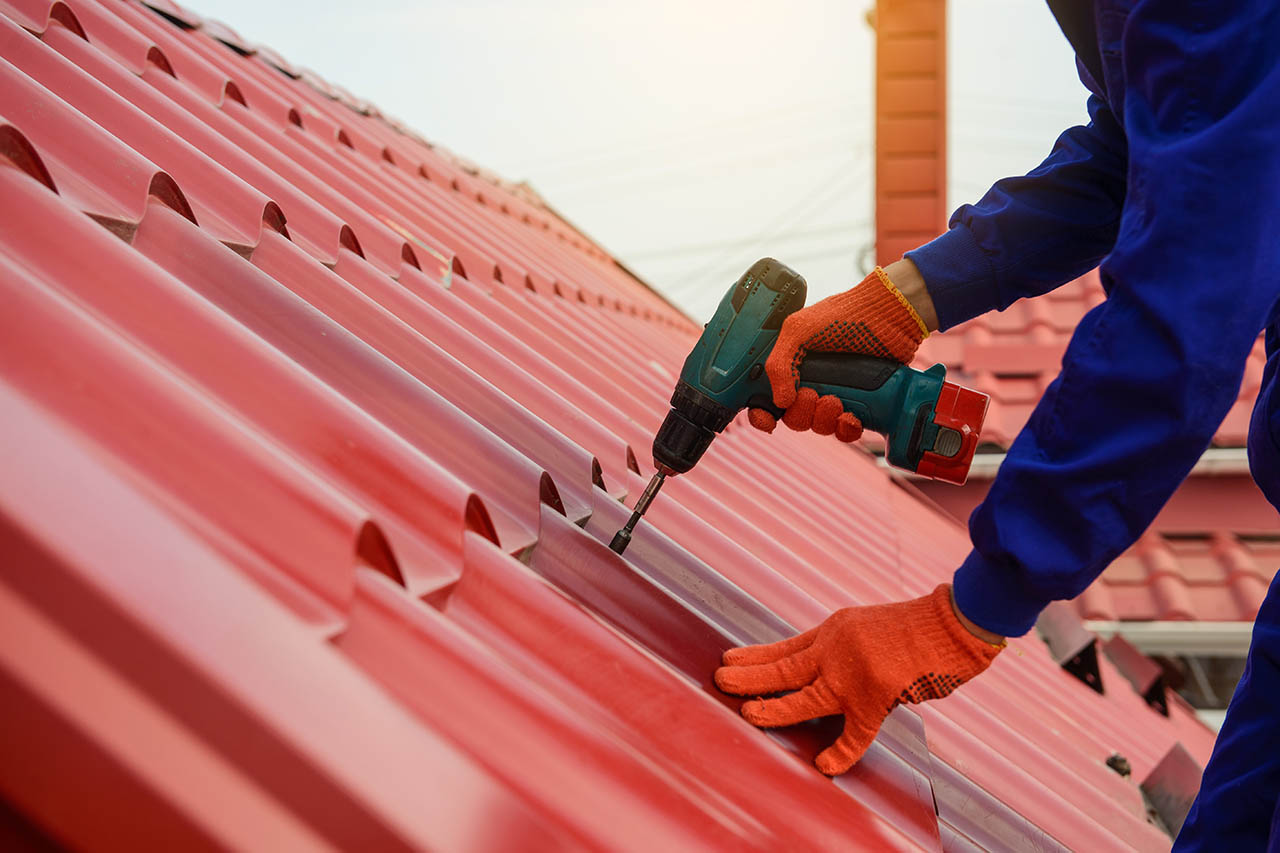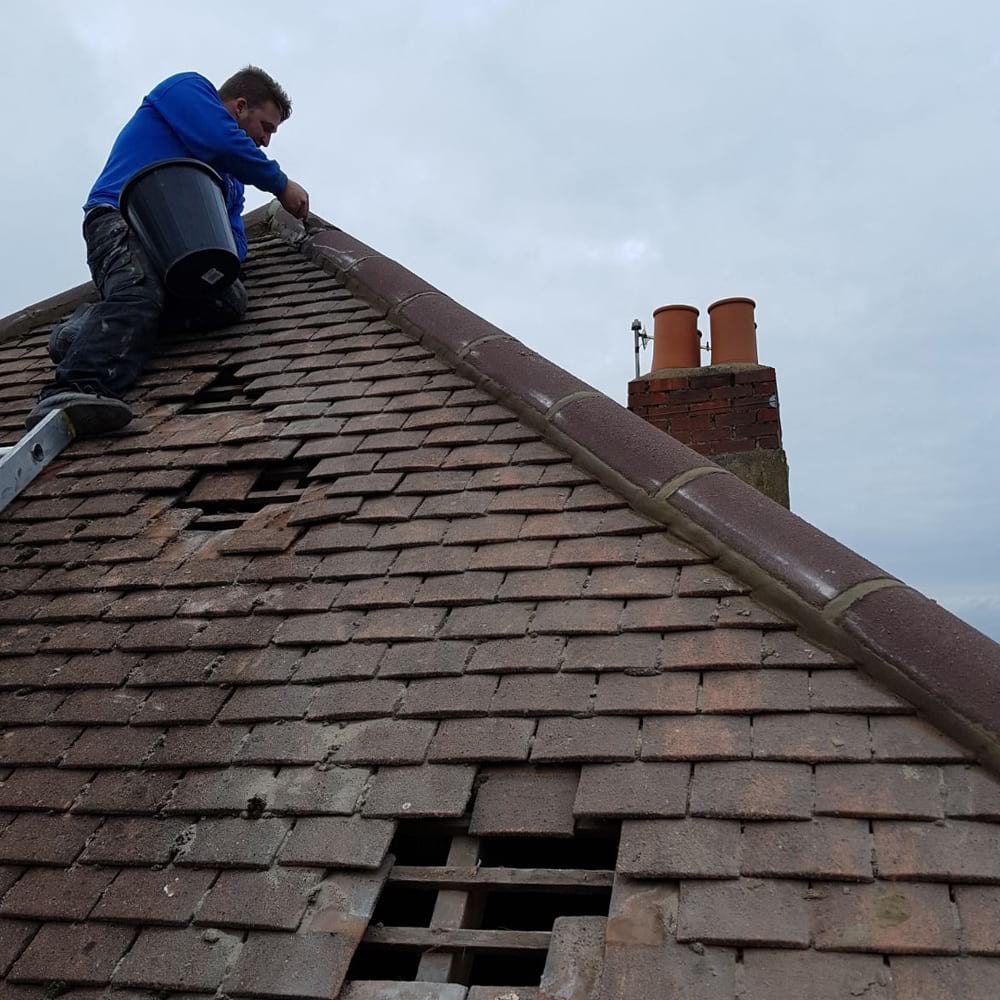Your High Point Roofing Service: Where Experience Meets Unmatched Quality
Wiki Article
Roofing: A Comprehensive Overview to Roof Essentials
Roof is an important facet of any building, supplying protection versus the elements and guaranteeing the structural stability of a building. In "Roofing: A Comprehensive Guide to Roofing Basics," we look into the fundamental expertise required to understand and carry out effective roofing jobs. This overview covers a variety of subjects, consisting of an overview of various roof materials, the advantages of each product, and the crucial tools required for roof jobs. In addition, we check out the detailed procedure entailed in roofing, supplying important insights into appropriate installment techniques. We use functional tips for maintaining and repairing your roof, extending its life expectancy and preventing costly damage. Whether you are a professional service provider or a homeowner wanting to enhance your knowledge, this guide is a beneficial resource for understanding the basics of roof covering.Different Kinds Of Roofing System Products
When it involves roof, there are various sorts of materials readily available for various applications and climates. Selecting the right roofing product is important, as it not only affects the looks of a building yet also plays a critical role in protecting it from exterior elements. Among one of the most popular roof covering materials is asphalt tiles. These shingles are affordable, simple to set up, and can be found in a wide variety of designs and shades. They appropriate for a lot of environments and supply excellent toughness and weather resistance. One more prominent option is metal roof, which supplies remarkable durability and resilience. Steel roof coverings are resistant to fire, insects, and rot, making them a perfect selection for areas with severe weather. Ceramic tile roofing is another choice that is known for its durability and visual allure. Floor tiles are readily available in various products such as clay, concrete, and slate, and can endure extreme climates. Ultimately, there are additionally alternatives like timber drinks and artificial products like rubber and plastic. Each roof material has its own benefits and negative aspects, so it is necessary to think about aspects such as sturdiness, expense, and maintenance requirements before deciding.
Benefits of Each Roofing Material
Each roof covering material offers one-of-a-kind advantages that make it appropriate for different applications and climates. Comprehending these advantages can aid homeowners and professionals make educated decisions when selecting the ideal roof product for a certain job.
Asphalt roof shingles, for example, are one of the most prominent roof products due to their affordability, sturdiness, and ease of installation. Steel roofings, on the other hand, are understood for their durability and energy performance.
For those seeking an extra eco friendly alternative, there are roofing products like clay ceramic tiles and slate. Clay ceramic tiles are fireproof, resilient, and give outstanding insulation. Slate roof coverings are not only visually pleasing but additionally highly sturdy, with a lifespan of approximately 100 years. They are resistant to fire, mold, and parasites.
When it involves level roofings, EPDM (ethylene propylene diene terpolymer) rubber is a popular option because of its adaptability, very easy setup, and resistance to UV rays and weathering. It is also economical and calls for minimal maintenance.
Important Tools for Roof Projects
Roof covering tasks call for a series of vital devices to make certain reliable and effective installation or repair work. These tools are developed to offer security, accuracy, and ease of use for workers on the roof. One of the most essential tools is a roofing nail gun, which enables fast and secure add-on of tiles or various other roofing materials. A roofing nail weapon removes the requirement for manual hammering, conserving time and lowering stress on the worker's hands and arms.
Another essential device is a roof knife, which is made use of for cutting tiles and other products to the preferred shapes and size. A roofing blade must have a sharp, sturdy blade that can conveniently slice via different roof covering materials. Additionally, a roof covering shovel or tear-off tool is needed for removing old or damaged roof materials. This tool has a level, large blade that can effectively tear off shingles, nails, and other particles from the roofing system.

Actions Included in the Roof Covering Process
To start the roof process, it is important to first analyze the condition of the existing roof covering and identify if any kind of repair services or replacements are required. This action is crucial as it establishes the foundation for the remainder of the roofing job. A comprehensive examination must be carried out to recognize any indications of damages, such as missing or broken roof shingles, leakages, or drooping areas. It is likewise vital to check for any type of architectural problems that might affect the overall stability of the roof covering.
When the evaluation is total, the following step is to prepare the roof for the installation or repair. This includes eliminating Check This Out any type of existing roof covering products, such as old tiles or floor tiles, and getting rid of the location of particles. It is essential to make certain that the roof is tidy and cost-free from any blockages prior to waging the next steps.
After preparing the roofing system, the next action is to mount or fix the roof materials. This involves laying down the ideal underlayment, such as roof covering felt, and after that applying the picked roof material, such as ceramic tiles or shingles, according to the manufacturer's guidelines. It is necessary to comply with the appropriate installation strategies to make sure a water tight and resilient roof covering.
Lastly, the last step in the roof covering process is to carry out a last evaluation to ensure that the roof covering has been properly mounted or fixed. This involves monitoring for any loosened or damaged products, as well as making certain that all flashing and seals are safe and secure. roofing companies High Point. It is vital to deal with any kind of issues quickly to prevent further damage or leakages
Tips for Maintaining and Repairing Your Roof Covering
When preserving and repairing your roofing system, it is vital to routinely examine for any kind of indicators of damage or wear. Begin by checking your roof for any absent or loose roof shingles, as these can leave your roofing prone to leaks and water damages.Furthermore, inspect your roof for any indicators of leakages or water discolorations on the ceiling or walls inside your home. These can be indicators of a roofing system leakage and must be addressed promptly to stop additional damages. Pay close attention to areas around smokeshafts, vents, and skylights, as these prevail locations for leaks to occur.
Frequently cleaning your roofing system is another important facet of upkeep. Eliminate any type of particles, such as leaves or branches, as they can catch moisture and bring about web roofing system decay. Additionally, maintain downspouts and gutters clear to make certain proper water drain and avoid water from merging on your roofing.
In terms of repairs, it is crucial to address any kind of problems without delay to prevent additional damages. Tiny repairs, such as changing missing roof shingles or sealing small leaks, can commonly be done by property owners. Nonetheless, for more comprehensive repairs or if you are not sure of the extent of the damage, it is advised to talk to an expert roof covering contractor.
Final Thought

In "Roofing: A Comprehensive Overview to Roof Covering Fundamentals," we dig right into the fundamental expertise required to comprehend and execute effective roofing tasks. One of the most important go tools is a roof nail weapon, which allows for protected and fast accessory of tiles or various other roofing products. A roof covering blade need to have a sharp, durable blade that can quickly slice via different roof covering materials. Additionally, a roof shovel or tear-off tool is required for eliminating old or damaged roofing materials.After preparing the roofing system, the next step is to mount or fix the roof products.
Report this wiki page